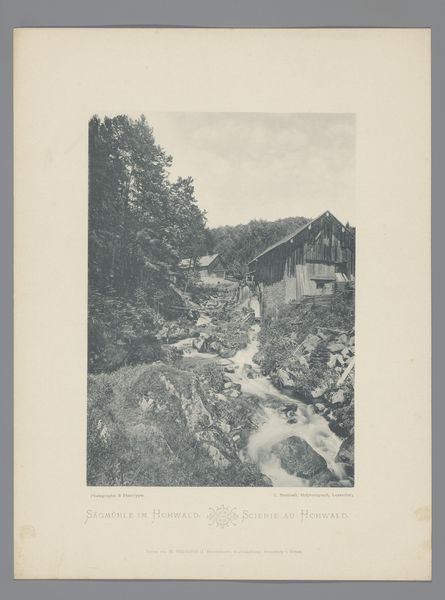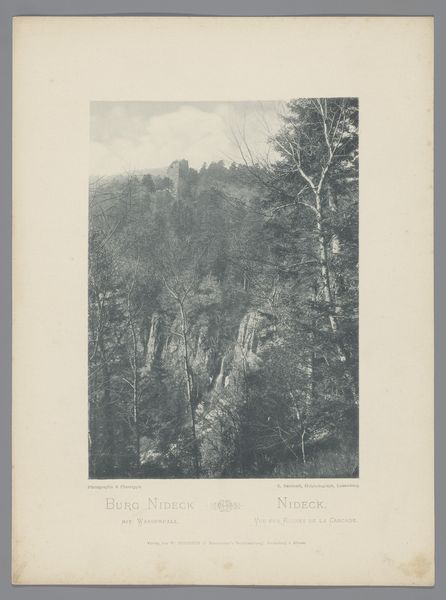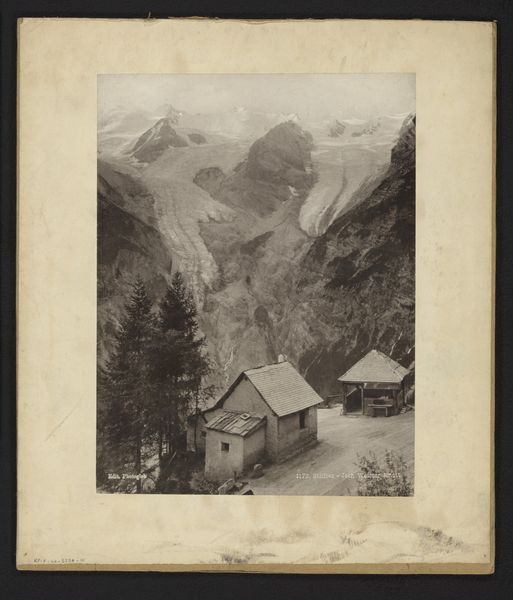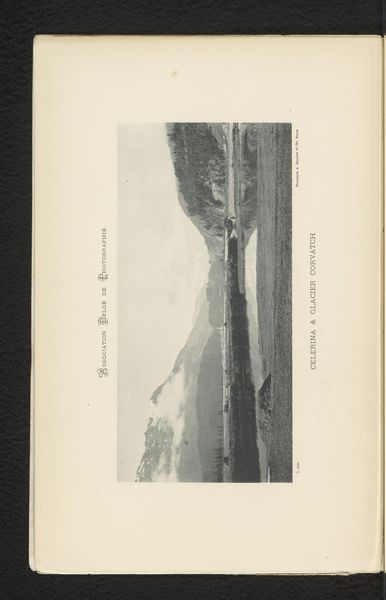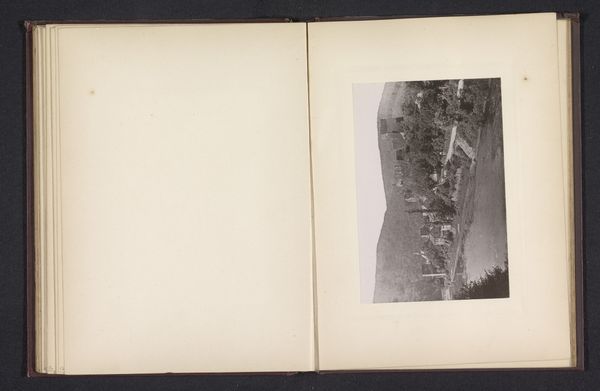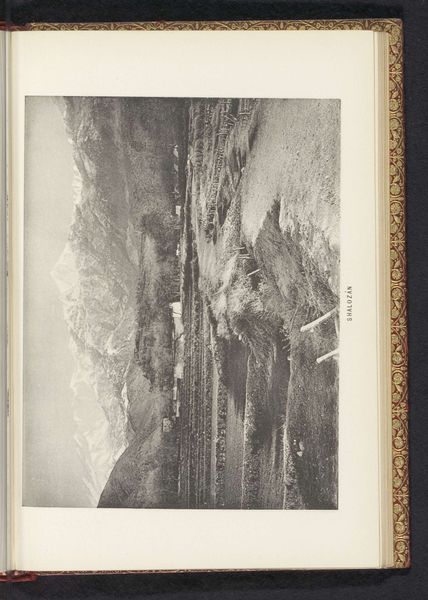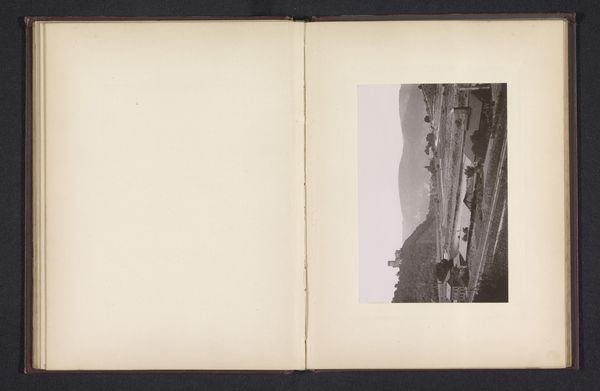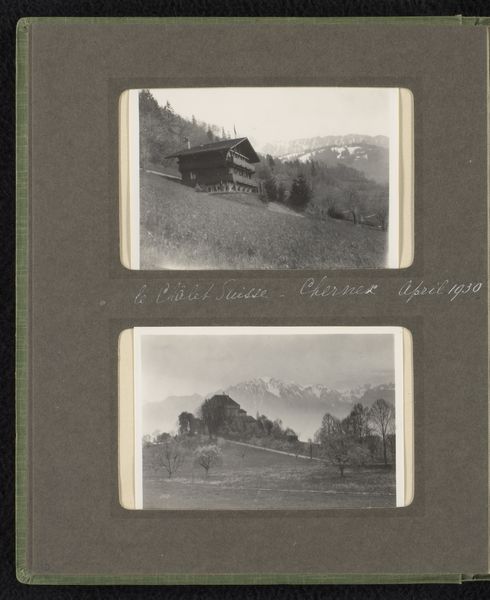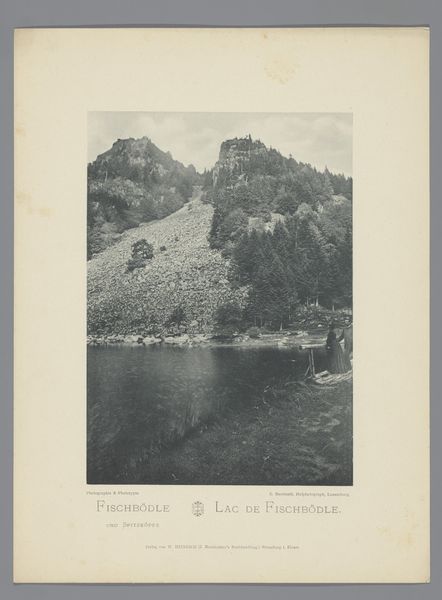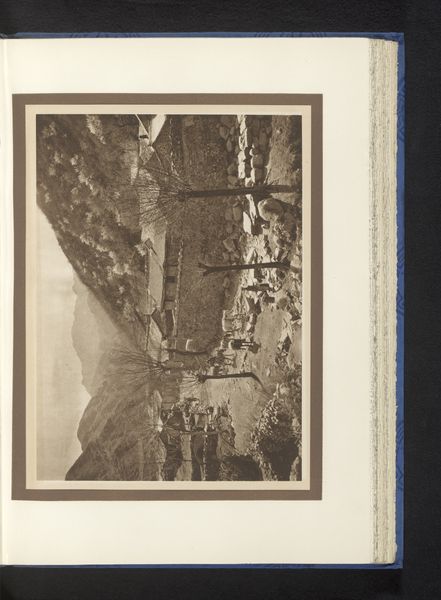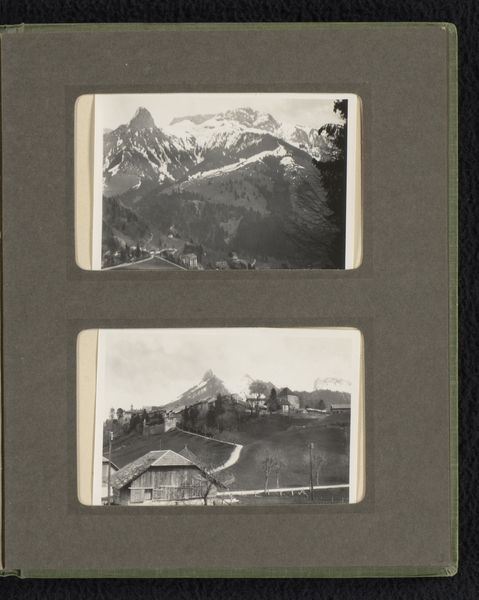
Gezicht op Mürren met station, kabelbaan en omliggende bergen c. 1880 - 1910
0:00
0:00
mixed-media, photography, gelatin-silver-print
#
mixed-media
#
pictorialism
#
landscape
#
photography
#
gelatin-silver-print
#
mixed media
#
watercolor
Dimensions: height 217 mm, width 161 mm
Copyright: Rijks Museum: Open Domain
Editor: This is a fascinating mixed-media piece: a gelatin-silver print with watercolor touches by Gebrüder Wehrli, titled "Gezicht op Mürren met station, kabelbaan en omliggende bergen," dating roughly between 1880 and 1910. I’m immediately drawn to the contrast between the detailed town below and the vast, imposing mountains in the background. What social context do you think the Gebrüder Wehrli brothers might have been commenting on by featuring both? Curator: This image invites us to consider the power dynamics at play when technology intersects with the natural landscape, especially in the late 19th century. The railway, a symbol of progress, cuts a stark line through the mountains, almost as if to claim ownership. What do you think that tension – progress *versus* preservation – reflects about that era’s values? Editor: I see what you mean. The composition suggests a visual tension between development and the untouched wilderness. Perhaps the railway is symbolic of man's desire to overcome nature, and to make previously inaccessible places accessible. Curator: Exactly! And who is gaining access? Early tourism fundamentally changed the power structures of small towns. It also reflects how landscapes themselves become commodified and consumed, shaping both identity and place. How do you think this dynamic impacts contemporary society’s relationship to the environment? Editor: It’s made me realize that even beautiful landscapes aren't politically neutral. The choices of what to depict, like the inclusion of the railway, can reveal underlying social and economic structures. I didn’t initially consider how tourism can be so transformative – and even disruptive – to local communities. Curator: Right. Examining that push and pull lets us recognize photography's crucial role in shaping the stories we tell ourselves, and who gets to write them. Editor: That’s a valuable insight; thank you. Curator: My pleasure!
Comments
No comments
Be the first to comment and join the conversation on the ultimate creative platform.

